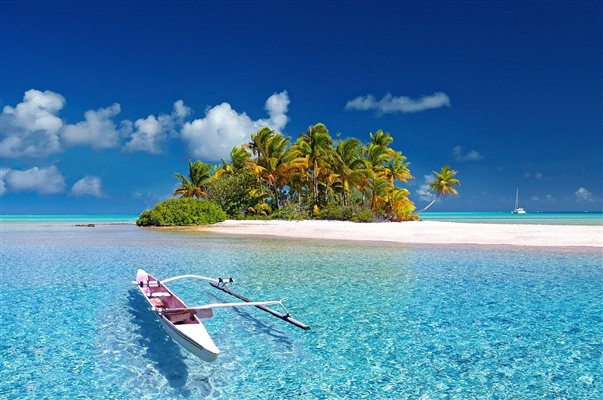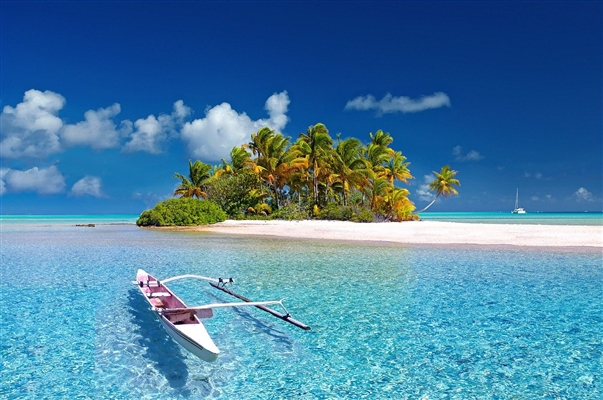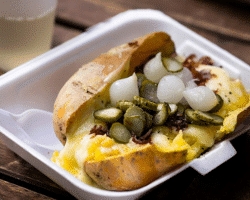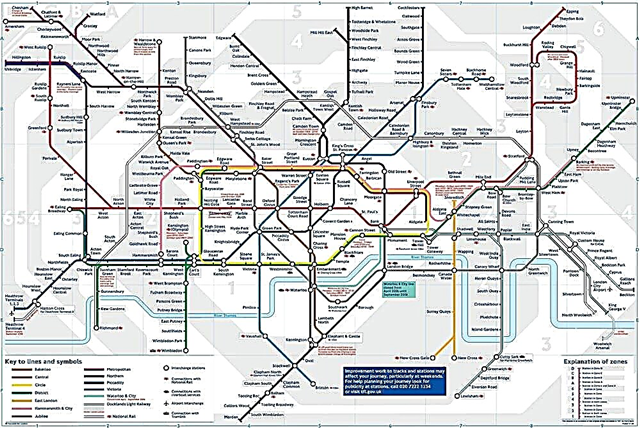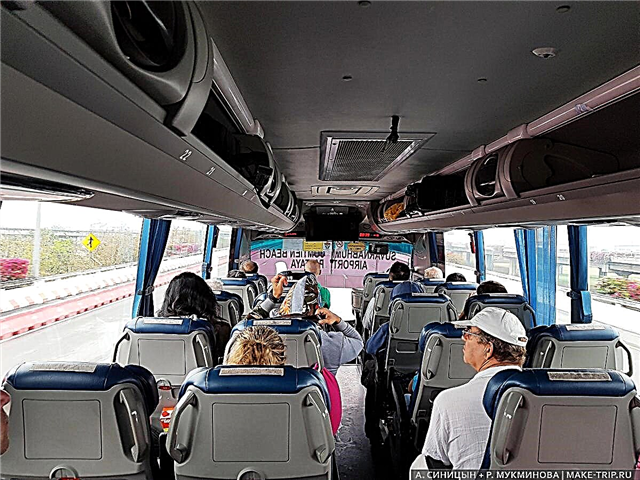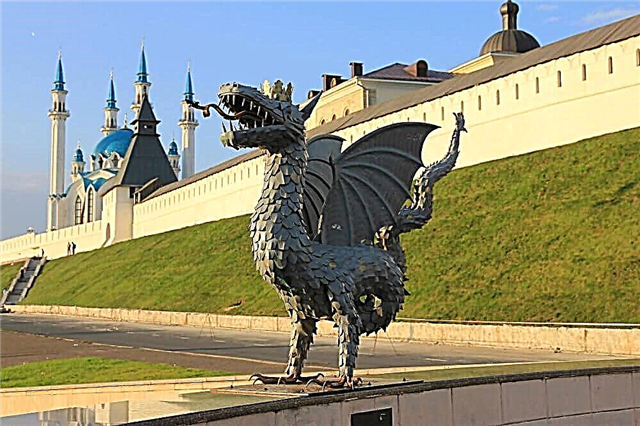The capital of Tatarstan has long claimed the title of the third most important city in Russia after Moscow and St. Petersburg. Street decoration is not the last thing in the struggle for status. Therefore, the emergence of new monuments is a necessity, as is the maintenance of old ones in proper form. Kazan is the birthplace of Chaliapin. Also, outstanding scientists, teachers, art workers and fighters for the rights of their people lived here at different times.
Mussa Jalil, Alexander Butlerov and other figures were honored with busts and monuments in their honor. The emphasis is also placed on the national flavor. Nowhere else in the world tourists will be able to see a monument to the Tatar pie echpochmak or get acquainted with a unique mythical creature - the dragon Zilant. Walking along the streets of Kazan - two in one - a lesson in history and art.
Historical and modern monuments of Kazan
List of interesting monuments and sculptures of the city.
Memorial to the Heroes of the Great Patriotic War
Erected in 1995 in Victory Park. It took another 10 years to complete the project for the arrangement of the area around. The memorial consists of a pantheon, a limestone stele and an Eternal Flame. The marble tablets bear the names of the natives of Tatarstan - full holders of the Order of Glory and Heroes of the USSR. Nearby - a dedication to the rifle divisions formed during the war in the republic.

Monument to Musa Jali
It appeared on the streets of the city in 1966. Depicts the Tatar poet struggling to the end. He is bound with barbed wire, but not broken. Jalil died in captivity by the Nazis and was posthumously awarded the title of Hero of the USSR. His monument is 8 meters high. The full-length sculpture stands on a massive boulder. A staircase leads to it, and next to it is a wide bench. It hosts annual events on the day of Musa's execution.

Monument-temple to the defenders of Kazan
One of the oldest monuments in the city was founded in 1821. Consists of an above-ground temple and an underground part - a church-tomb. It is a tribute to the memory of those killed during the siege and capture of Kazan in 1552. It looks like a truncated pyramid. There are entrances from all sides of the world, the main one has more wide steps. In 2004, a bridge and embankments were built for a convenient visit to the islet on which the memorial temple stands.

Stele of freedom
The monument rises near the building of the national cultural center. The opening in 1996 was combined with the celebration of the Republic's Independence Day. The height of the stele is about 40 meters. A female bird "Harriyat" is placed on top of it. This image comes from local mythology and is associated with freedom and uplifting. The wingspan of the sculpture is about 6 meters. It rotates and lights up at dusk.

Monument to Gabdulla Tukay
Since 1958 it has been located on Pushkin Street. Around there is a public garden named after the writer. His bronze figure with an open book in his hands rises several meters. Tukai is one of the main poets of the republic. A national ornament is applied to the pedestal, and Gabdulla's name is written in both Cyrillic and Arabic letters. This landmark is a federal cultural heritage site.

Monument to F.I.Shalyapin
The world famous singer is a native of Kazan. The creation of the monument was entrusted to the sculptor Andrei Balashov. Location - next to the Epiphany Cathedral. It was here that Chaliapin was baptized. The monument was unveiled in 1999. He shows Fyodor Ivanovich at the moment of parting with Russia and friends just before immigration. Several outstanding events are associated with the monument. For example, his purge was turned into a flash mob in 2009.

Dragon Zilant
Created in 2003 by Marat Gubaidullin. Zilant is popular in Tatarstan. It is also on the coat of arms and flag of Kazan. The mythical creature is a combination of a dragon and a serpent. The image of this character is found everywhere, therefore, there is an increased interest in the monument. In 2011, it was updated, inserted "golden" scales and gave a slim figure. Zilant has a crown on his head so that there is no doubt about his status.

Kazan cat
During her visit to the city, Catherine II noticed the absence of mice. She ordered to send one of the local cats to her chambers, but 30 of them were brought to St. Petersburg at once. These cats became the founders of the dynasty of the Hermitage cats. In 2009, history from the past was immortalized. The cat lying imposingly on a chair was made by Igor Bashmakov, a metal artist. The sculpture was cast at the Zhukovsky plant.

The carriage of Catherine II
In 1767, Catherine II toured the eastern regions. Kazan was also included in the route of the trip. The visit became an impetus for the development of the city. This period is immortalized by a copy of the carriage in which the Empress traveled. The original is on display at the local museum, and on the streets of the city you can see a cast-iron specimen with bright inserts. Tourists are photographed not only next to the monument, but also inside.

Monument to A.S. Pushkin
Installed in 1956. In 1833 the poet visited Kazan, and this became an additional reason for perpetuating his memory. The sculpture of Pushkin was placed on a granite pedestal near the Opera and Ballet Theater. On the other side of the building, there is a monument to Gabdulla Tukay, similar in style. This architectural decision is not accidental. Tukai did as much for Tatar literature as Pushkin did for Russian.

Monument to G.R.Derzhavin
The opening took place in 2003. Bronze Derzhavin sits deep in thought. His bare head and sandals on his feet make him look unusual. The date on the pedestal of the monument is 1846. It was then that the first monument to Derzhavin was erected. It was destroyed during the revolution. For some time there was a bust of Emelyan Pugachev at this place. By the 260th anniversary of the writer, the omission was corrected.

Monument to V. Lenin
Created in the 50s of the last century. The authors of the project are Pyotr Yatsyno and Alexander Gegello. Location in front of the Opera and Ballet Theater. Jalilah creates conditions for a better view of the monument from different points. They portrayed the leader of the world proletariat to his full height and put him on a high pedestal. People flocked to the monument to hold rallies and celebrations.

Soldier's Mother Monument
Belongs to the territory of the Victory Park. It was presented to the townspeople by the family of the former president of the republic Mirtimer Shaimiev in 2005. At the same time, the design of the district was completed and giving it its present look. The bronze female figure is a dedication to all mothers who have not received children from the war. She is holding a tulip in her hands - another symbol of sorrow. The height of the monument is about 4 meters. They opened it without fanfare in the presence of veterans.

"Confidence"
It bears the unofficial title “the kindest monument in Kazan”. Depicts the following scene: a boy helps a girl to climb a pedestal, and a miniature schnauzer is watching the children intently. The opening of the sculptural composition took place in 2016. The author of the project, Fanil Valiullin, made a monument commissioned by the dental clinic. The figures of children and their dog were cast in Yekaterinburg.

"Kazan benefactor"
Asgat Galimzyanov is a prototype for a sculpture. All his life he was engaged in helping other people: orphanages, nursing homes, victims of all kinds of disasters. The lifetime monument to the patron was created on the initiative of the president of the republic. A group of sculptors led by Asia Minnullina worked on the bronze composition. The benefactor, as it were, leads the horse by the bridle. She pulls a cart with several children.

"Vodovoz"
The project of the monument was ordered and paid for by the Vodokanal organization. The sculptural composition was installed in 2006 as a gift to the city. She reproduces a common scene from the past: a water carrier makes a stop on his horse and fills the girl's buckets with water. This method was used until 1874.The monument has been worked out to the smallest detail - from wrinkles on the face of people to the mane of a horse.

"Riddles of Shurale"
Located near the theater. Kamala since 2011. The monument was created by Asia Minnullina as part of a charitable project. The composition represents two fairy-tale heroes described by Gabdulla Tukay. In honor of the 125th birthday of the writer, Batyr and Shurale found themselves on a large log in front of each other. It is believed that touching the monument can improve your mood.

Jubilee arch
Dated in 1888. Built for the 100th anniversary of the gunpowder factory. The architect Ivan Kotelov was responsible for the project. The combination of two colors in the design, where red predominates, gave the arch another name - "Red Gate". The coats of arms of Catherine II and Alexander III are placed above the main aisle. Over time, a park complex was formed nearby, and the structure was recognized as a historical monument of regional significance.

Monument to the architect of the Kazan Kremlin
It is located in a small square within the Kremlin walls. The work on the creation of the monument was carried out by a group of Tatar sculptors. They finished the project in 2003. The composition aims to celebrate the contribution of all architects who worked on the image of the Kremlin, regardless of era or nationality. The reason for the creation of the monument was the inclusion of the Kremlin in the list of UNESCO World Heritage Sites in 2000.

Monument to A.M.Butlerov
The chemist was born in Tatarstan and while living in Kazan formulated the theory of the chemical structure of organic substances. Butlerov worked in other areas as well. Many contemporaneous colleagues believed that his contribution to science was insufficiently noted. Butlerov thought progressively, ahead of his era. The monument in honor of the explorer was erected in 1978. This is how the city celebrated its 150th anniversary.

Monument to N. Lobachevsky
The bust was installed in 1896 in the park of the same name. The sculptor is Maria Dillon. She created the look of a mathematician from a portrait taken by an unknown artist. The bust was placed on a high black granite pedestal. Bronze parts are attached separately. They were broken off several times by vandals, but restored. Since 1960, the monument has been on the list of protected objects of federal significance.

Monument to L. N. Gumilyov
The column with the bust installed on it is a tribute to the memory of the researcher for the study of the history of the Tatar people. Lev Gumilyov is the son of the Silver Age poets Anna Akhmatova and Nikolai Gumilyov. As he himself said: he was in the camps twice, once for dad, the other for mom. With such a tragic biography, he managed to take part in 21 expeditions, as well as publish dozens of articles and 12 monographs.

Monument to Kul Gali
This writer is a representative of the Volga-Bulgar medieval literature. He died during the Mongol invasions. A monument in his honor was erected in the Millennium Park of Kazan in 2005. A group of local sculptors, including the famous Andrei Balashov, worked on his project. The height of the monument together with the pedestal is more than 4 meters. No images of Kul Gali have survived, so the image came out collectively.

Monument to M. Vakhitov
Located on a hill since 1985. A wide staircase leads to the monument. Around - lights, benches, flower beds. Vakhitov was a fighter for the freedom and rights of Muslims. For his active work in this direction, he was shot by the White Guards in 1918. The monument and its pedestal are impressive in size and are visible from different points of the city. If a library is built here, it will be moved to the street of the same name.

Monument to Afghan Warriors
It was installed in 1998 on Dekabristov Street. It was dismantled in the spring of 2018, and a replacement in Victory Park never appeared. Talks about the creation of a new monument to the Afghan soldiers are underway. It is planned to expand its theme and make a memorial in honor of all internationalist soldiers. It remains unclear whether the old abstract monument will return to the city or a different sketch will be chosen.

Cenotaph
Installed in the park. Gorky in 1967. The sculpture is massive, without details, but it evokes strong emotions. A faceless soldier is depicted as seriously wounded. He is on his last gasp, but stretches forward. As conceived by the authors, this symbolizes self-sacrifice and a quick victory. Monument - dedication to those killed during the Great Patriotic War. Nearby, the Eternal Flame is burning and there is a stele, the height of which is about 30 meters.

Memorial complex in Uritsky Park
It meets visitors almost at the entrance. The objects of the complex are made of concrete and black polished marble. Particular attention is drawn to the impressive size of the front helmet and the gold star in the center. The names of the victims of the Great Patriotic War are inscribed on the plates. The largest inscription is a reminder to the descendants of the feat of their fellow countrymen. The composition is surrounded by evergreen spruce.

"Clock in Arabic style"
Appeared in the center of the square. Tukai in 1999. The sculptural bronze composition consists of several sectors. Up to about the middle, it is a figured pillar. Next are the dials turned in different directions. Above - sculptures: pegasus, muses and a boy with a pipe. There are lines from the work of Tukay and painting with Arabic calligraphy. The monument is crowned with a kind of spire.

"Compass"
The popular name of the monument is "navel". Installed on a pedestrian street in the city center. A low marble pyramid is placed on a granite pedestal. The edges are inscribed with letters - symbols of the cardinal points. A star is laid out around the monument. The distance from Kazan to the largest cities in the world is written along its contour. Local belief: rubbing the top of the pyramid - to bring closer the fulfillment of a cherished desire.

Monument-fountain "Kazan"
Opened in the park of the 1000th anniversary of Kazan. It is also a fountain. The appearance of the monument is connected with the legend about the name of the city. The diameter of the cauldron bowl is 36 meters. Jets of water rise from it, reaching 17 meters. They flow down into a special tank-pool. The shape of the cauldron symbolizes wealth, just power and infinity. The fountain is guarded by mythical creatures resembling dragons, on which it stands.

Monument to the first tram in Kazan
The creation of an unusual composition was timed to the celebration of the 65th anniversary of the Victory. In 2010, rare trams appeared near the Sukonnaya Sloboda station. Now there are three of them, and each has a twist. One is considered the oldest in Kazan, since it entered the line in 1937. The other has two tiers, which is not typical for this type of transport. The latter is famous for the peculiarities of operation - he worked on horse-drawn vehicles.

Monument to S.Z.Saidashev
Stands by the building of the Humanitarian Pedagogical Institute. Saydashev is a composer, conductor and teacher who was at the origins of Tatar music. Based on his works, performances were prepared at the Academic Theater. Kamala. Although the decision to create a monument to Saydashev was made a long time ago, many disputes arose about its location and appearance. The project was completed only by 2005.

Monument to Baki Uramchi
Makhmut Gasimov created a monument to his colleague in 1997. The place of installation was chosen in the historical center of Kazan. The opening was timed to coincide with the centenary of Baki Uramchi. He is depicted wearing a sculptor's apron, either relaxing or thinking about his new work. Uramchi also became famous as a photographer and artist. Around the monument there is a picturesque park of the same name with birches and flower beds.

Lovers arch
Built in the 30s of the last century. The arch is one of the entrances to the territory of the Black Lake Park. People gave the structure a few more names, for example, "arch of whispers" or "arch of sighs." The structure has an acoustic feature: if two people stand on opposite sides of this elliptical structure, they will hardly understand each other's words. There is a legend around the city that the arch was erected according to the drawings of Nikolai Lobachevsky.

"Echpochmak"
The monument with a national flavor was erected in 2016 within the limits of the restaurant and entertainment complex.Echpochmak is a baked triangle pie stuffed with meat, potatoes and onions. One of the features of the dish: during the cooking process, broth is poured into it for juiciness. It is baked not only by Tatars, but also by Bashkirs. The monument is about 2 meters high. Echpochmak looks delicious, like a real one, and lies on the forged likeness of a dish.


